The Plastic - Climate Connection Runs Through Whales
"Restoring normal whale activity to the oceans would capture the CO2 equivalent of 2 billion trees. Our plastics threaten all that."
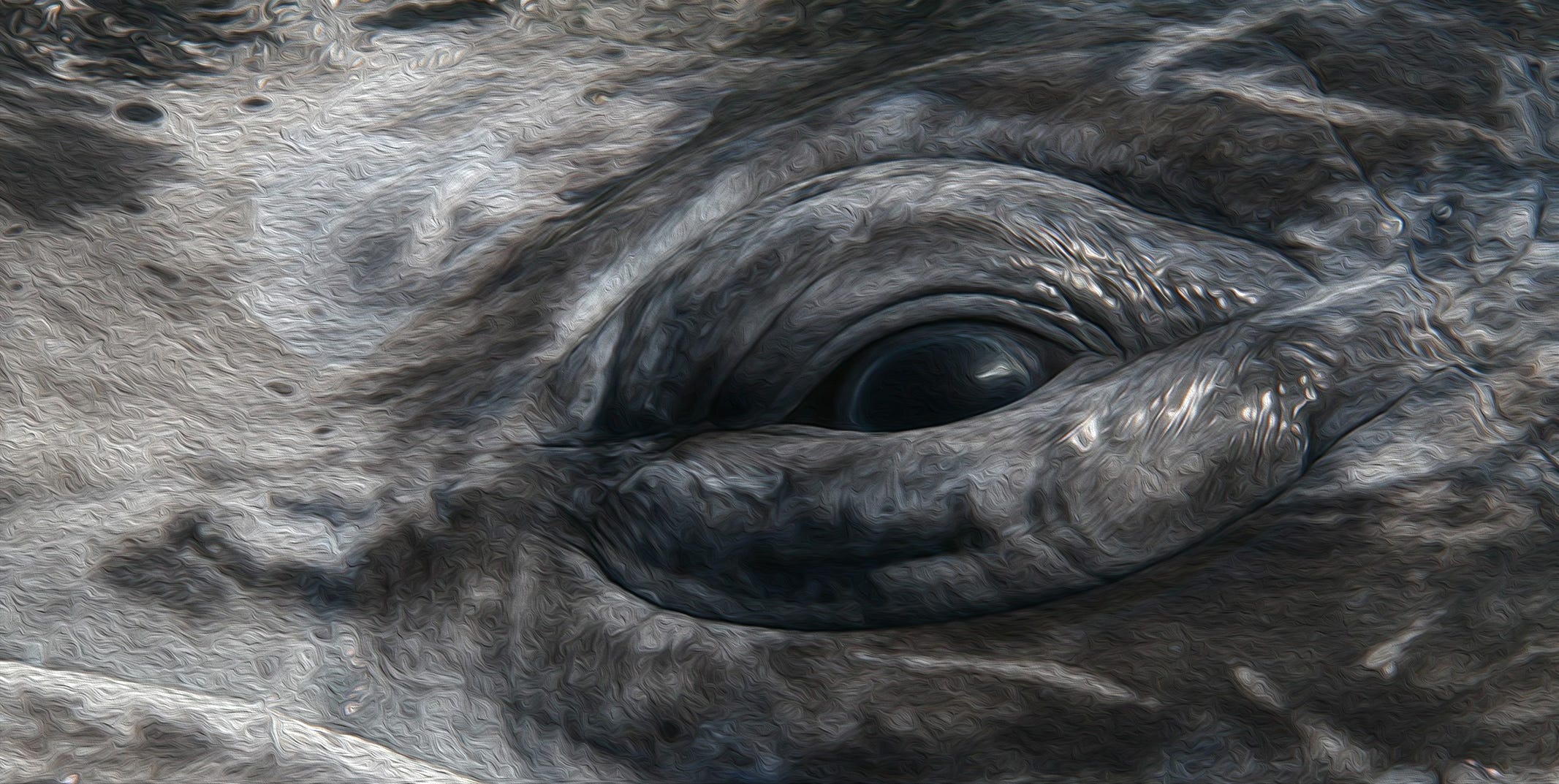
One of the most memorable thrills of my lifetime — there have been too many to easily remember — was my first swim with Atlantic whale sharks off of México, in the Straits of Cuba. My guide up on the boat motioned to me, treading water and scanning the horizon for any dorsal fins, to “dive, dive!” and I did, just in time to see a shark some 30 feet long, with an open mouth nearly 5 foot wide, converging directly on my position, at speed.
I dodged to my left as fast as I could, not hazarding the time it would take to bring my camera up and record the moment. By the time I positioned my small Canon point-and-shoot, the shark was past me, devouring plankton to the starboard of the boat. These giant sharks are herbivores, so he or she was probably trying to avoid me as much as I was trying to avoid him or her. Here is the picture I took:
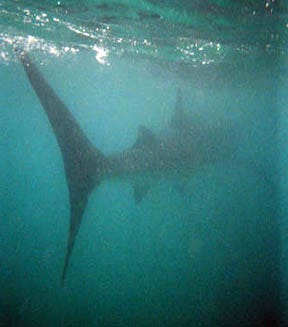
Whale sharks (Rhincodon typus), currently on the Red List of threatened species, first appear in the geological record along with Manta rays, at the Eocene-Oligocene boundary about 34 million years ago. That was when one of the largest extinctions of marine invertebrates and mammals in Europe and Asia, likely triggered by volcanism, dropped Earth’s temperature some 15°C over just a few hundred thousand years, isolating a warm water niche near the equator at a time when the continents were much closer together. One relative of whale sharks is the Mesozoic plankton-feeding dinosaur, Megachasma (big mouth), which roamed the oceans 135 million years before Rhincodon typus. Whale sharks are 15 times older than we are, or about 100 times older than our current evolutionary form as Homo sapiens.
Whale sharks, which can live up to 130 years and grow 60 feet long, are well adapted to warming oceans. They are only rarely found in waters below 70°F (21°C) and have annual migration routes in both the Eastern and Western hemispheres, tracking plankton blooms to warming waters.
They are part of a growing repertoire of climate solutions.
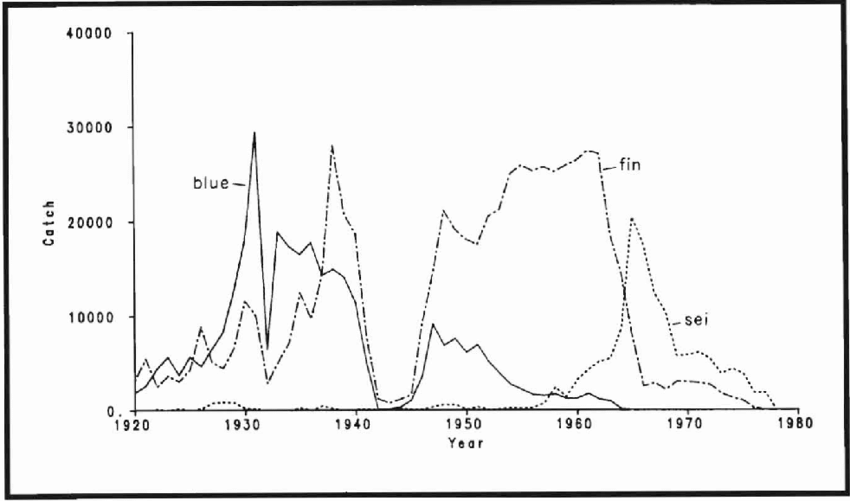 |
Annual catch of Sei, Fin, and Blue Whales prior to IWC Moratorium in 1985
|
Phytoplankton — those little green plants growing on the surface of fresh and salt waters — are highly efficient carbon sequestrators. Worldwide, their “biological carbon pump” transfers about 10 GtC (gigatons, or billion long tons, of carbon, or 37 GtCO2) from the atmosphere to the deep ocean each year. All human activity, from fossil fuel burning to soybean farming, adds about the same. Homo and phytoplankton are a matched respiratory cycle. The International Monetary Fund (IMF) recently observed:
These microscopic creatures not only contribute at least 50 percent of all oxygen to our atmosphere, they do so by capturing about 37 billion metric tons of CO2, an estimated 40 percent of all CO2 produced. To put things in perspective, we calculate that this is equivalent to the amount of CO2 captured by 1.70 trillion trees—four Amazon forests’ worth….
Until the industrial era, Phytoplankton were the thermostat that moderated human- or volcano-induced warming to maintain a balance between Iceball Earth and Hothouse Earth. Whenever river, lake or ocean surfaces began to warm, equatorial growths of plankton would speed up, converting carbon dioxide into oxygen and carbon. The oxygen would rise to the atmosphere, freshening our air, and the carbon would be eaten by fish like whale sharks or sea turtles or descend to the depths to decompose or be entombed.

Even small changes in the growth of phytoplankton may affect atmospheric carbon dioxide concentrations, which feed back to global surface temperatures. A very large change would occur if there were any significant loss of plankton-feeders. When a baleen whale scoops up plankton or a toothed cetacean rises to breathe, they also defalcate. The nitrogen, potassium and other important minerals in their excretions are food for the plankton bloom. Take away the whales, and you remove this important source of fertilizer. When a whale, turtle, shark, or dolphin dies, they sink to the ocean floor to be eaten, decompose, or be entombed in sediments. If the floor is deep enough, their carbon, as methane, is trapped and cannot rise to the surface and return to the atmosphere. Without these plankton-feeders, and those that feed on them, more plankton would decompose close to the surface, on their way to the depths, or in shallow sediments, returning their carbon to the atmosphere as carbon dioxide or methane. There would also be a substantial loss of the nutrient flows that fertilize plankton blooms, greatly reducing their extent.
The whales are sequestrators.
Scientists at the IMF have calculated the value of a whale at $2 million each due to the important role they have in reducing greenhouse gases. A Blue Whale, for example, can take nearly 30 metric tons of CO2 out of the atmosphere, for centuries, compared to the around 15 kg captured by a tree each year.
At a minimum, even a 1 percent increase in phytoplankton productivity thanks to whale activity would capture hundreds of millions of tons of additional CO2 a year, equivalent to the sudden appearance of 2 billion mature trees. Imagine the impact over the average lifespan of a whale, more than 60 years.
…
Our conservative estimates put the value of the average great whale, based on its various activities, at more than $2 million, and easily over $1 trillion for the current stock of great whales.

We once had 5 million whales in all the world’s oceans. Today there are about 1.3 million. By the 1930s we were killing 50,000 per year, mostly for outdoor lighting and axle grease. Generating 50% of all oxygen and capturing 40% of CO2 produced, phytoplankton rely on whales to provide nutrients and maintain their numbers. If the number of whales was restored to around 5 million this would significantly increase phytoplankton numbers. Even a 1% increase in phytoplankton would capture millions of tons of additional CO2, says the IMF.

We estimate that, if whales were allowed to return to their pre-whaling numbers—capturing 1.7 billion tons of CO2 annually—it would be worth about $13 per person a year to subsidize these whales’ CO2 sequestration efforts.…
Since the role of whales is irreplaceable in mitigating and building resilience to climate change, their survival should be integrated into the objectives of the 190 countries that in 2015 signed the Paris Agreement for combating climate risk.
Many of us labor under the illusion that whale populations are recovering since the International Whaling Commission put a moratorium in place in 1985/86. If, thanks in no small measure to Greenpeace and Sea Shepherd, whaling is largely curtailed today, having been reduced to renegade Japanese research vessels and coastal dolphin hunts, the populations should be recovering, right? Wrong.
Enter plastics. Globally, at least 23% of marine mammal species, 36% of seabird species, and 86% of sea turtle species are now threatened by plastic debris. So far, over 270 species, including turtles, fish, seabirds, and mammals, have been observed to have impaired movement, starvation, or death from exposure to plastics, although studies in the northern Gulf of California found that as few as one in every 50–250 (range: 0–6.2%) carcasses are recovered from cetacean deaths at sea. Some 300 other species of marine fauna are thought to be in jeopardy. (Laist 1997; Wabnitz and Nichols 2010; Williams 2011; Sigler 2014). Ingestion of plastic has been documented in 48 (56% of) cetacean species, with rates of ingestion as high as 31% in some populations (Baulch and Perry 2014).
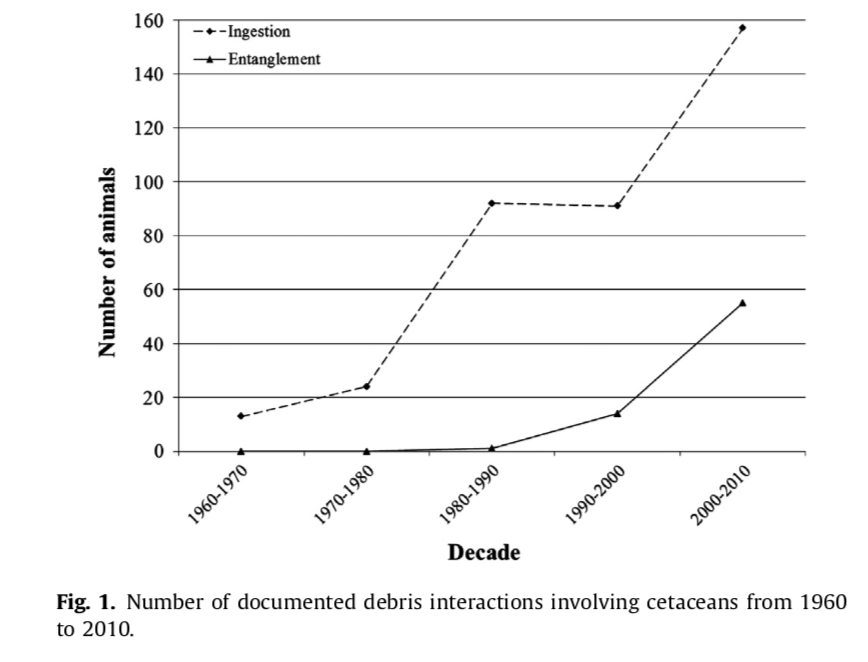
Plastics are forever. Approximately, 10,000 shipping containers plummet off cargo ships into the ocean each year. A shipping crate carrying 28,000 plastic ducks was lost at sea between Hong Kong and the USA in the Pacific Ocean over 20 years ago but at least 2000 of the ducks are believed to be still circulating, while others have been found washed ashore in Hawaii, Alaska, South America, Australia, and the Pacific Northwest.

We are increasing not only the amount of plastic in the environment, including microplastics prone to ingestion by baleen filter-feeders, but the rate by which that amount is growing. We are just at the upward turning junction of the J-curve. In the 1960s, 5 million tons of plastic were manufactured worldwide each year. By 30 years from now, there will be not 250 million tons entering the ocean, like today, but 1800 million. It's exponential. Almost one-third of plastic produced is used to manufacture single-use “disposable” plastics such as coffee cup lids, stirrers, or straws. Each year we design and sell more disposable products using materials that float and last forever.

What is being “disposed of” with every straw, stirrer, bathtub duck, and Halloween costume are the whales. And with the whales go the ocean’s thermostat.

The IMF report concluded with a prescription and a warning:
Healthy whale populations imply healthy marine life including fish, seabirds, and an overall vibrant system that recycles nutrients between oceans and land, improving life in both places. The “earth-tech” strategy of supporting whales’ return to their previous abundance in the oceans would significantly benefit not only life in the oceans but also life on land, including our own.
With the consequences of climate change here and now, there is no time to lose in identifying and implementing new methods to prevent or reverse harm to the global ecosystem. This is especially true when it comes to improving the protection of whales so that their populations can grow more quickly. Unless new steps are taken, we estimate it would take over 30 years just to double the number of current whales, and several generations to return them to their pre-whaling numbers. Society and our own survival can’t afford to wait this long.
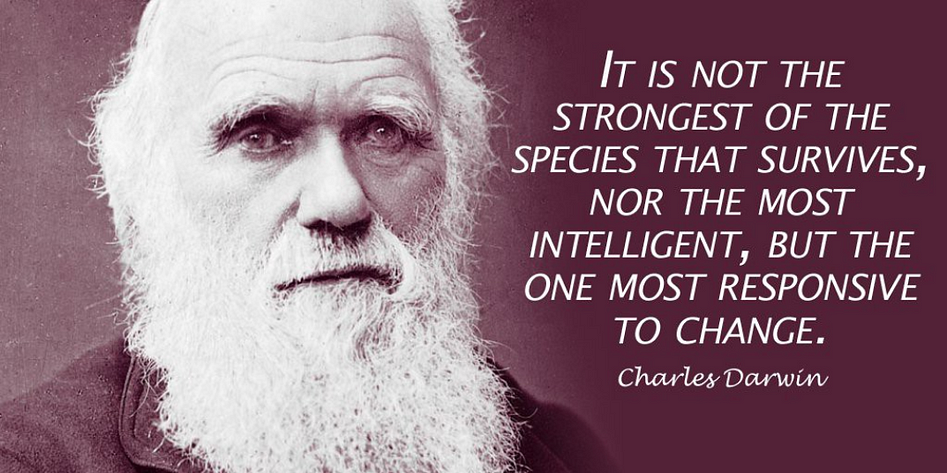
We have to save the whales. There is no escaping that. But to save the whales, we must also save the turtles, and the gulls, and those little green plants that bob on the waves. To do all that, the first step is to do no more harm. We have to banish non-biodegradable plastics from our lives.
-----------
You encourage me to do more and then tell you about it. Help me get my blog posted every week. All Patreon donations and Blogger subscriptions are needed and welcomed. Those are how we make this happen. PowerUp! donors on Patreon get an autographed book off each first press run, such as my latest, Transforming Plastics, now mailing to those donors. Please help if you can.
Comments